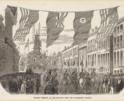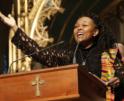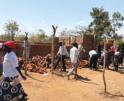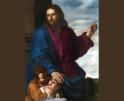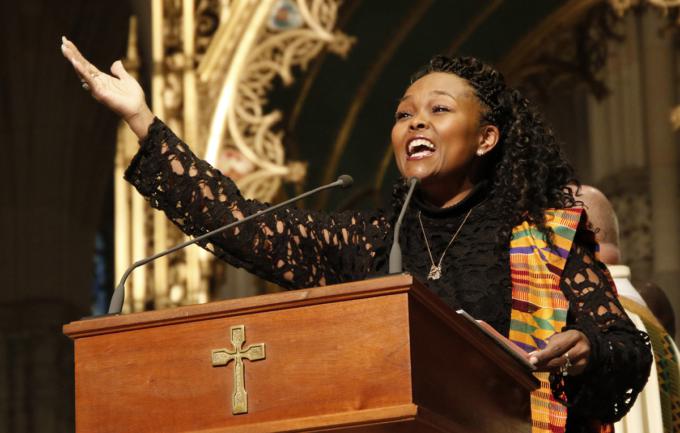
Faith
Even with all the challenges -- and there are many -- they are a very important part of the liturgical team of the parish.
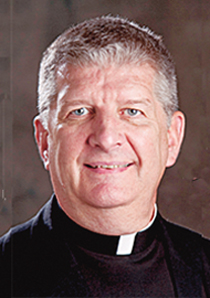
O'Grady
Although they really are two distinct ministries, most of the time, in regular parish life, they are merged. Liturgical purists will, I hope, forgive the conflation of the ministries.
The cantor is commissioned to lead the response to the responsorial psalm as well as to sing the psalm's verses. Usually, the cantor would also be responsible for the three antiphons -- entrance, for the gifts, and at Communion.
An antiphon is a verse, often a quotation from Sacred Scripture, assigned to the places in the liturgy mentioned above. These may be replaced by other appropriate hymns. Thus, if there is a hymn for the procession, then the antiphon is neither sung nor otherwise proclaimed, likewise at those other Mass parts.
The cantor is responsible for the psalm and the antiphons. The psalm is to be proclaimed -- preferably sung or, if need be, spoken -- from the ambo, the same place where the readings (three on Sundays and solemnities, two for most other days) are proclaimed. So important is the ambo that it is not supposed to be used for anything else except the homily. It is entirely appropriate, and indeed preferred, that there be another stand, podium, or lectern available for the cantor and leader of song for those other musical responsibilities.
The leader of song is the one who, by example, urges the assembly to participate in all the other musical parts of the Sunday Mass. A leader is one who gets others to follow, not one who takes over another's responsibility. This is a challenge in parishes, especially if there is not a history or tradition of the assembly singing. It takes time, repetition, and confidence on the assembly's part to implement the parish's repertoire of the church's liturgical music.
Both cantors and song leaders, whether separate individuals or merged into one, need to prepare. They must not seem to be familiar with the music but actually be familiar with it.
They must balance the temptation to be a diva on the stage or a wallflower in the background. They cannot overwhelm the assembly, nor can they sit back and hope that they'll learn on their own and enter with gusto.
They need to be able to use gestures that signal the point where the psalm verses end and the response by the assembly begins. Again, there must be a balance between the overly dramatic and the barely visible.
Cantors and song leaders need to let the assembly know that they realize they are there. They must have some eye contact with the assembly but not with individuals.
It's not as easy as it looks. Ask one of them about the challenges they encounter.
As with all liturgical ministries, cantors and song leaders need to be convinced that they are carrying out a ministry for the assembly of which they are a part. Even with all the challenges -- and there are many -- they are a very important part of the liturgical team of the parish.
A dilemma that is almost impossible to solve is that the way most churches have been constructed has an elevated, in some cases highly elevated, area we call the sanctuary, which has all the appearances of a stage. There is likely a temptation for those "on stage" to assume the role each has to the neglect of the others' roles. Sometimes bishops, priests, and deacons are especially susceptible to this temptation. The word sanctuary has in it "sanctus," meaning that the space is sacred. Thus, we must treat it as such. The sacred space belongs to all the assembly, not to an individual or a select group of individuals.
Some non-Catholic denominations refer to the whole interior of their churches as the sanctuary, so they include in sanctuary areas that Catholics call the sanctuary, the place for the choir -- usually a loft, and the place for the assembly -- usually pews or individual seating.
Cantors and song leaders should have both initial and ongoing formation. They must know what the church expects of them -- both as musicians and as active participants in the sacred action.
One of the greatest dangers for cantors and song leaders are ambos and podiums. They come equipped with a sound magnifying system and these are not the friend of the cantor or leader of song, nor of the assembly. There is a temptation for music ministers to fill in when the assembly is reticent about participation. Ideally, the microphone(s) for the music ministries would have its volume set substantially lower than that of either the ambo or the altar.
Cantors and song leaders provide an irreplaceable service. The best way to thank them is to follow their lead and join in your musical parts of the Mass.
A resource for initial and ongoing formation is "Guide for Cantors, Third Edition," published by Liturgical Training Publications.
Comments
Comments Policy
Recent articles in the Faith & Family section
-
President Fillmore joins Bishop Fenwick for the 1851 'Railroad Jubilee'Matthew Radulski
-
Cantors and leaders of songFather Robert M. O'Grady
-
Building our Church One Brick at a TimeMaureen Crowley Heil
-
Servant of allScott Hahn
-
Scripture Reflection for Sept. 22, 2024, Twenty-Fifth Sunday in Ordinary TimeJem Sullivan

